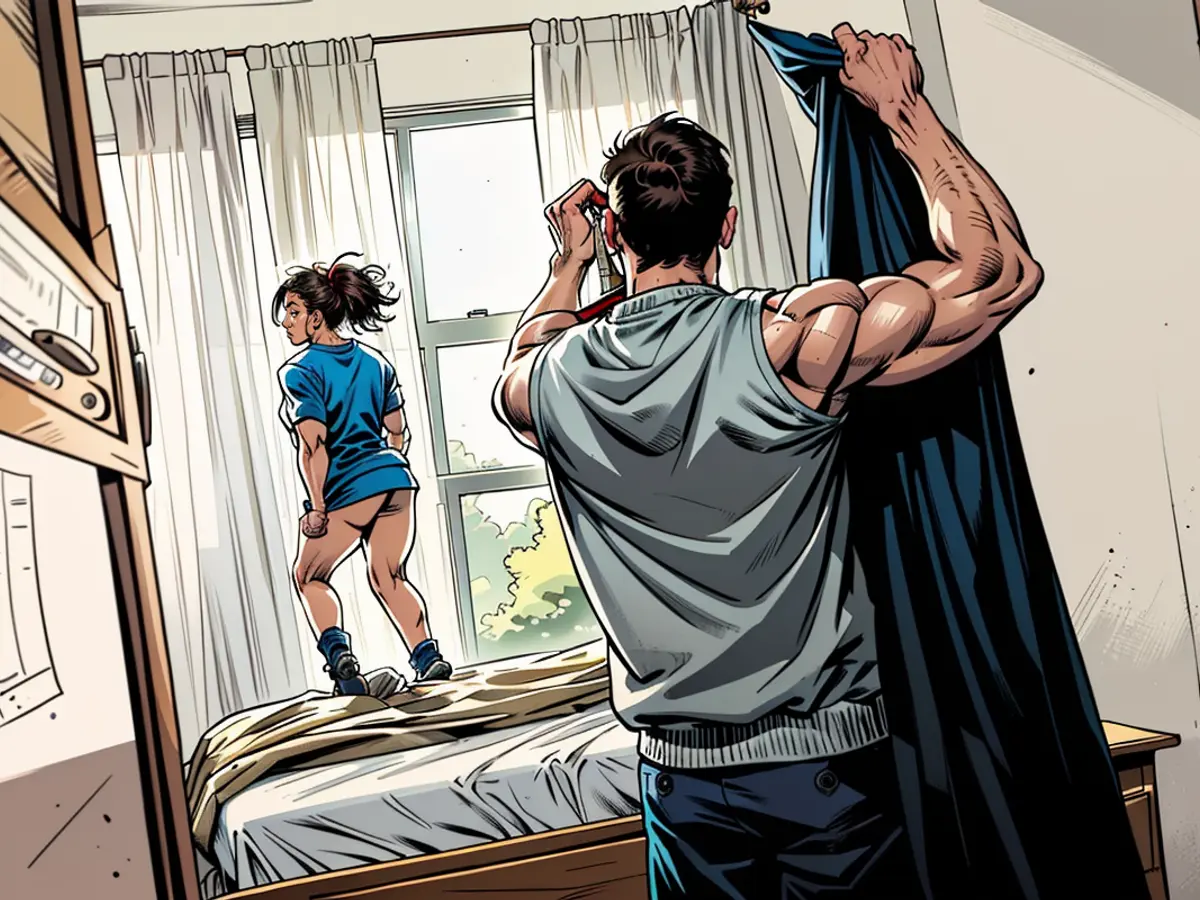Family-based caregiving services. - Ways for Fathers to Be More Present for Their Kids
The influencer Sebastian Tigges, whose handle is @tigges on Instagram, is viewed by many of his fans as a model of what a modern father should be. He posts videos about his experiences with bed rest and childcare. However, statistics from the Federal Statistical Office show that only 1.9% of fathers with children under six years old were on parental leave in 2022, while almost a quarter of mothers were. The "gender care gap" is currently 44.3%. Women spend 44.3% more time on unpaid work related to caring and worrying than men. How do we reconcile the social media image of caring fathers like Tigges with these statistics? What keeps men from being more active in the father role?
Sociologist Jutta Allmendinger, President of the Berlin Social Science Center (WZB), sheds some light on this issue. "In all our surveys, fathers say they want to spend more time with their children," she says. "Mothers also want to spend more time in their careers. So there is a desire for change." The reason for the status quo, she explains, lies in traditions and cultures in companies and politics. According to Allmendinger, the "expensive spouse splitting" is a contributing factor. This practice creates incentives for mothers to stay at home longer after giving birth and work part-time later, while men continue to work full-time without interruption.
Patricia Cammarata, author of the book "Getting Out of the Mental Load Trap: How Fair Work Distribution in the Family Works," has observed that men are more engaged in childcare than in the past, but with limitations. "Men tend to handle the 'fun' parts of childcare, like playing with children, but not the more mundane tasks like homework supervision or taking children to sports lessons," she says. "This is due to socialization. Women are raised to be the primary caregivers and take on the 'mental load,' or all the things in their heads that need to be initiated and delegated. Men, on the other hand, tend to see themselves as helpers waiting for orders."
Eberhard Schäfer of the Father Center Berlin agrees that fathers are indeed more involved with childcare than in previous eras. "Older fathers say they barely knew their own children when they were young. Today, they want to be more present for their children. It's just not always easy. For example, fathers often feel overwhelmed, or they're unhappy when their efforts aren't appreciated," he says.
Schäfer also points out that not all fathers waiting to take parental leave do so because of the usual reasons. "Some do it because of relationship issues. I'd like to see deeper consulting," he suggests. "Fathers also take time for their children when they're not on parental leave. And the distribution of parental leave is the result of a partnership negotiation, with the woman involved."
Allmendinger believes that changing the political framework is essential. "Women don't necessarily not want to work," she says. "We need to change the structures to shift the mindset. If we could implement the coalition agreement - the family allowance and more 'father months' are proposed - that would be a start."
The family allowance, a two-week paid leave for the partner after the birth, is still being debated. "And the marital deduction cannot just be abolished," Allmendinger acknowledges. But she suggests introducing transitional measures, such as allowing families to keep the savings and use them for their children. She also proposes a shorter parental leave period but with a higher wage replacement than the usual 65%. "That way, families would have less money missing when receiving parental allowance from fathers."
So while the image of the modern caring father may be idealized on social media, the reality is more complex, with cultural, social, and political factors making it difficult for men to fully take on the father role.
Idea: Let's explore the reasons for the differences between the image of the caring father on social media and the actual situation, focusing on traditions, cultures, and politics.
Research: What are the statistics on how much time fathers and mothers spend on childcare? How does socialization affect men's involvement in childcare? What are the current political frameworks that encourage the traditional gender roles?
Expert Interviews: What are the perspectives of sociologists like Jutta Allmendinger and author Patricia Cammarata on why men struggle to take on a more active role in childcare? How does Eberhard Schäfer's experience at the Father Center Berlin align with this?
Mistakes: It is important to clarify that the figure of 1.9% of fathers on parental leave refers to fathers with children under six years old. The gender care gap is currently 44.3%.
To bring about a personal change in relationships, Cammarata notes that there should be an understanding that the woman bears the primary responsibility while also acting as a support system for the man. This can only succeed if she passes on her abilities and experience to him. "He needs to take it seriously," says Cammarata.
Women recommend that instead of immediately jumping into action and doing everything themselves, they should explicitly outline tasks and their deadlines. "These things seem invisible to men," says Cammarata.
For men considering using paternity leave, the key is to do so independently from their partners. Allmendinger agrees that there shouldn't be any animosity as men today already do significantly more than their fathers. "We won't make progress if we pit women against men. I know that men today are more involved," says Allmendinger.
Although mothers have been discussing childbirth, breastfeeding, and "care work" for a long time, Cammarata acknowledges that it's still helpful to have public figures like Sebastian Tigges championing the cause. "Practically speaking, he's sending the right message," says Cammarata. "But if we start discussing the distribution of care work in a broader context, that's when real progress can be made."

Read also:
- Despite the social media image of involved fathers like Sebastian Tigges, only 1.9% of fathers with young children took parental leave in 2022, highlighting a significant disparity between the ideal and the reality.
- According to Patricia Cammarata, while men are more engaged in childcare than in the past, they often handle the 'fun' parts of childcare, such as playing with children, but not the more mundane tasks, reflecting societal expectations and socialization.
- Sociologist Jutta Allmendinger suggests that changing the political framework, such as implementing the coalition agreement's proposals for family allowance and 'father months,' could help shift the mindset and encourage more fathers to take on a more active role in childcare and care work.







